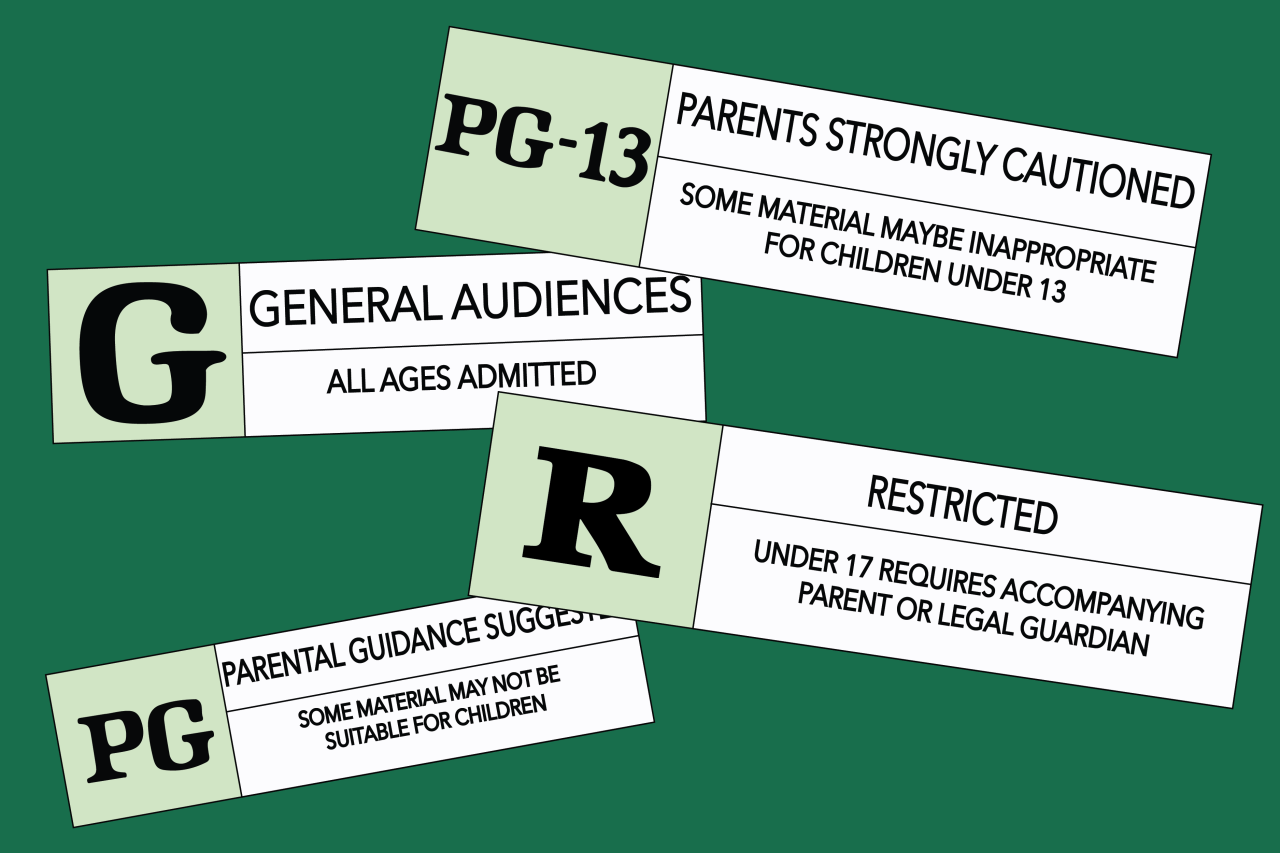Legal Challenges Around 21+ Movie Ratings in America explores the complex interplay between freedom of expression, parental concerns, and the evolving landscape of film distribution. This examination delves into the history of the MPAA rating system, analyzing its legal underpinnings and effectiveness in a digital age. We will investigate the ongoing debates surrounding age appropriateness, the role of parental responsibility, and the economic implications of various ratings, ultimately questioning whether the current system adequately balances artistic freedom with the protection of minors.
The discussion will encompass various legal battles surrounding film ratings, the influence of lobbying groups, and international comparisons of different rating systems. By considering these multifaceted perspectives, we aim to provide a comprehensive understanding of the ongoing challenges and potential future directions for film content regulation in the United States.
The History of Movie Ratings in America
The history of movie ratings in America is a complex tapestry woven from evolving societal norms, industry self-regulation, and ongoing debates about freedom of expression versus the protection of children. The system we know today didn’t emerge overnight but rather developed gradually, responding to changing cultural landscapes and legal pressures.
The Hays Code, implemented in 1930, represented the first significant attempt at self-regulation within the film industry. This code, enforced by the Motion Picture Producers and Distributors of America (MPPDA), dictated strict moral guidelines for film content, prohibiting depictions of nudity, sexual activity, and violence. While intended to prevent government censorship, the Hays Code ultimately stifled creative expression and led to a somewhat sanitized cinematic landscape for decades.
The Creation and Evolution of the MPAA Rating System
The Hays Code’s limitations eventually led to its decline, paving the way for the creation of the Motion Picture Association of America (MPAA) rating system in 1968. This system, initially comprised of four ratings (G, M, R, and X), aimed to provide parents with more information about the suitability of films for their children. The “M” rating was later changed to “PG” (Parental Guidance Suggested) in 1984, reflecting a shift in societal attitudes and a recognition that the previous rating wasn’t clearly defined. The “X” rating, initially intended for adult-oriented films, became associated with exploitation cinema and was eventually replaced by the “NC-17” rating in 1990. The introduction of PG-13 in 1984 further refined the system, providing a middle ground between PG and R for films with some mature content. These changes reflect the ongoing negotiation between industry self-regulation and the demands of a changing public. The ongoing debate about the effectiveness and fairness of the MPAA rating system continues to this day, with frequent discussions about the appropriateness of certain ratings for specific films.
Comparison with International Rating Systems
Unlike the MPAA’s relatively decentralized system, many other countries utilize government-regulated or more formally structured rating boards. For example, the British Board of Film Classification (BBFC) in the UK operates under a legal framework, with ratings legally enforced in cinemas and on video releases. Similarly, many European countries have their own national rating systems, often with different criteria and levels of detail. These variations highlight the cultural differences in attitudes toward film content and the role of government in regulating media. While the MPAA’s system relies heavily on industry self-regulation, other systems demonstrate a greater degree of government oversight. The differences underscore the diverse approaches to balancing artistic freedom with the protection of audiences.
Impact of Changing Societal Norms on Movie Ratings
Societal norms and attitudes towards violence, sexuality, and language have significantly influenced the evolution of movie ratings. What was once considered unacceptable or controversial may now be commonplace, leading to adjustments in the application of ratings. For instance, the increased acceptance of violence in action films has resulted in a higher tolerance for graphic depictions in R-rated movies. Similarly, changing attitudes towards sexual content have influenced the ratings assigned to films dealing with mature themes. The ongoing evolution of societal norms will continue to shape the future of movie ratings and the ongoing debate about their appropriateness. This dynamic relationship between societal values and film ratings is a key factor shaping the cinematic landscape.
Legal Basis for 21+ Movie Ratings
The Motion Picture Association of America (MPAA) rating system, while influential, lacks the force of law. Its authority stems from a complex interplay of industry self-regulation, market forces, and the First Amendment rights of filmmakers and distributors. Understanding the legal framework surrounding the MPAA ratings requires examining its voluntary nature and the limitations placed upon government intervention in the realm of artistic expression.
The MPAA’s rating system operates on a voluntary basis. Film studios submit their movies for rating, and the MPAA, composed of representatives from the film industry, assigns a rating based on its guidelines. These ratings, such as PG, PG-13, R, and NC-17, serve as a form of self-regulation, providing parents with information to help them decide which films are appropriate for their children. Crucially, there is no legal obligation for filmmakers to submit their films for rating, nor are there legal penalties for releasing a film without a rating. The power of the system rests on the willingness of theaters and distributors to abide by the ratings and the impact those ratings have on box office revenue.
First Amendment Implications of Movie Ratings and Censorship
The First Amendment to the U.S. Constitution protects freedom of speech, including artistic expression. This protection extends to films, although it is not absolute. The Supreme Court has consistently held that certain categories of speech, such as obscenity, are not protected under the First Amendment. However, the definition of obscenity is narrow and requires proof of three elements: (1) whether the average person, applying contemporary community standards, would find that the work, taken as a whole, appeals to the prurient interest; (2) whether the work depicts or describes, in a patently offensive way, sexual conduct specifically defined by the applicable state law; and (3) whether the work, taken as a whole, lacks serious literary, artistic, political, or scientific value. The MPAA ratings system attempts to navigate this complex legal landscape by providing guidance on content, not by imposing legal restrictions. The system itself does not constitute censorship because it does not prohibit the creation or distribution of films; it merely provides information about the content of those films.
Potential Legal Challenges to the Current Rating System Based on Free Speech Arguments, Legal Challenges Around 21+ Movie Ratings in America
While the MPAA rating system is largely accepted, potential legal challenges could arise based on free speech arguments. A filmmaker could argue that the rating assigned to their film is arbitrary or inconsistent with the MPAA’s own guidelines, thus violating their right to free expression. A successful challenge would require demonstrating that the rating system unfairly suppresses speech that is constitutionally protected. Furthermore, claims of viewpoint discrimination could be made if a filmmaker could prove that the MPAA systematically applies different standards to films based on their political or ideological content. However, establishing such a claim would be difficult, as the MPAA would likely argue that its ratings are based on objective criteria related to content and not viewpoint. The courts have generally been deferential to the MPAA’s rating system, recognizing its role in providing parental guidance without infringing on protected speech. However, the line between providing information and restricting speech remains a delicate and potentially litigious area.
Challenges to the 21+ Rating’s Effectiveness
The Motion Picture Association’s (MPA) ratings system, while aiming to guide parents in selecting appropriate films for their children, faces significant challenges in its effectiveness. Inconsistencies in rating application and the evolving nature of mature themes lead to ongoing debates about its accuracy and impact on protecting young viewers. The system’s reliance on a relatively small panel of raters also contributes to potential biases and subjective interpretations.
The rating system’s effectiveness in shielding children from inappropriate content is a complex issue. While the ratings provide a general guideline, they don’t always accurately reflect the content of a film. This leads to both over- and under-estimation of a film’s maturity level, causing confusion and potentially exposing children to material deemed unsuitable for their age group.
Examples of Films Rated R that are Arguably Suitable for Younger Audiences
Several R-rated films have been criticized for receiving a stricter rating than their content might warrant. The criteria for an R-rating often include violence, language, and thematic elements. However, the context and presentation of these elements can significantly impact their suitability for younger viewers. For example, some animated films, while containing some violence, might be considered suitable for older teens due to their artistic style and non-graphic depictions. Similarly, certain coming-of-age stories, while tackling mature themes, might be considered appropriate for mature teens given their realistic portrayal of teenage experiences and nuanced storytelling. The subjective nature of the rating process leads to inconsistencies in how similar themes are treated across different films.
Examples of Films Rated Lower than R that Contain Arguably More Mature Content
Conversely, some films rated PG-13 or even PG have been argued to contain mature content that might be more disturbing or inappropriate for younger viewers than some R-rated films. This disparity often stems from the focus on specific elements in the rating process, such as the level of violence or sexual content, rather than a holistic assessment of the overall impact on a young audience. For instance, a film with intense psychological horror elements rated PG-13 might be more disturbing for a child than a film with more explicit violence rated R. This discrepancy highlights the limitations of a system relying on a checklist of elements rather than a nuanced understanding of the potential effects on viewers of different ages.
Effectiveness of the Rating System in Protecting Children from Inappropriate Content
The MPA rating system’s effectiveness in protecting children remains a subject of ongoing debate. While it offers a general guideline, its reliance on self-regulation and subjective interpretation creates inconsistencies. The system’s limitations are exacerbated by the ever-evolving nature of media and the changing understanding of mature themes. Furthermore, the ease of accessing films online and through streaming services undermines the control parents might attempt to exercise based on the ratings alone. Ultimately, while the ratings serve as a starting point, they cannot fully guarantee a child’s protection from potentially inappropriate content; parental guidance and media literacy remain crucial components.
The Role of Parental Guidance and Responsibility
The debate surrounding 21+ movie ratings inevitably leads to a discussion about parental responsibility. While rating systems aim to guide consumers, the ultimate gatekeeper of what children view remains the parent or legal guardian. The effectiveness of any rating system hinges significantly on the active role parents play in monitoring and guiding their children’s media consumption.
Parental responsibility extends beyond simply checking the rating before allowing a child to watch a film. It involves open communication with children about age-appropriate content, understanding the potential impact of violent or sexually explicit scenes, and actively engaging in discussions about what they have seen. This proactive approach fosters critical thinking skills and helps children develop a healthy relationship with media. Furthermore, parents should be aware of the potential for exposure to inappropriate content through unintended means, such as online sharing or accidental discovery.
Parental Guidance and Streaming Services
The rise of streaming services and readily available online content has significantly complicated the task of parental guidance. Unlike traditional movie theaters or physical media, streaming platforms offer vast libraries of films with varying levels of maturity, often without clear age-based separation. Children may easily stumble upon inappropriate content through recommendations, search results, or even accidental clicks. Effective parental controls, offered by many streaming services, are crucial, but they are not foolproof. Parents must actively monitor their children’s viewing habits, use parental controls diligently, and remain vigilant about their children’s online activities. This might involve regularly checking viewing history, setting time limits, and engaging in conversations about their online experiences. For instance, a parent might set up a family profile on Netflix with specific age restrictions and regularly review the viewing history to ensure their child hasn’t accessed anything inappropriate.
A Public Awareness Campaign: “MediaWise Families”
A public awareness campaign, titled “MediaWise Families,” could effectively promote responsible media consumption. The campaign would utilize multiple channels, including television advertisements, social media outreach, and partnerships with schools and community organizations. The campaign’s core message would emphasize the importance of open communication between parents and children about media consumption, the benefits of utilizing parental controls, and the value of actively engaging with children about the content they view.
One element of the campaign could be a series of short, easily digestible videos featuring real families discussing their approaches to media consumption. These videos could highlight the challenges and triumphs of managing children’s exposure to various forms of media, including streaming services and online content. Another aspect could involve creating a user-friendly website with resources and tools for parents, including guides on how to use parental controls on various platforms, age-appropriate content recommendations, and tips for starting conversations with children about media. The campaign could also promote workshops and seminars in local communities, offering practical guidance and support to parents. This multi-faceted approach would aim to equip parents with the knowledge and tools necessary to navigate the complex landscape of modern media consumption responsibly.
Economic Implications of Movie Ratings
The Motion Picture Association’s (MPA) rating system, while intended to guide parental choices, significantly impacts the economic landscape of the film industry. The rating a film receives directly influences its marketing, distribution, and ultimately, its box office performance and profitability. Understanding these economic implications is crucial for studios, distributors, and filmmakers alike.
The financial impact of different ratings varies considerably. Films rated G or PG generally attract a broader audience, including families, leading to potentially higher box office returns, particularly during peak seasons like summer or holiday breaks. Conversely, R-rated films, while potentially appealing to a large segment of the adult population, may face limitations in marketing reach and may not attract family audiences, thus impacting overall revenue potential. PG-13 films often strike a balance, appealing to a wide range of viewers while still maintaining some edge. The financial success, however, is never guaranteed and depends on many other factors such as the quality of the film, the effectiveness of the marketing campaign, and the overall competition in the market.
Marketing Strategies for Films with Different Ratings
Marketing strategies are tailored to the target audience dictated by the film’s rating. G and PG-rated films often employ family-friendly advertising, appearing during daytime television slots and utilizing imagery and messaging appealing to children and parents. These campaigns frequently highlight the film’s wholesome content and suitability for family viewing. In contrast, R-rated films often utilize more mature and edgy marketing materials, targeting adult demographics through late-night television advertising, online platforms, and promotional materials that emphasize the film’s adult themes or action sequences. PG-13 films typically adopt a more flexible approach, incorporating elements of both family-friendly and adult-oriented marketing strategies to maximize their reach to a wider audience. The marketing budget itself also reflects the anticipated audience; films expected to draw larger audiences, often those with G or PG ratings, may receive larger marketing investments.
Potential Economic Consequences of Altering the Current Rating System
Any significant alteration to the current MPA rating system could have far-reaching economic consequences. For example, if the criteria for an R-rating were relaxed, it could lead to a surge in R-rated films, potentially impacting the market share of other rating categories. Conversely, stricter enforcement of existing guidelines could limit the production of films with certain themes, potentially affecting the diversity and creative freedom within the industry. The economic impact would be felt across the entire production and distribution chain, from studios and filmmakers to theaters and ancillary markets like home video releases and streaming services. A change could also affect the investment decisions of studios, influencing the types of films produced and the budgets allocated to them. The uncertainty surrounding such a change could also create volatility in the market, impacting stock prices and investment confidence in the film industry. Consider the example of the video game industry; the introduction of stricter rating systems impacted sales and investment in certain titles, causing a shift in development strategies and market focus. The film industry could experience similar shifts depending on the nature of the changes to the rating system.
Technological Impacts on Enforcement: Legal Challenges Around 21+ Movie Ratings In America
The digital age presents significant challenges to the enforcement of movie ratings, primarily due to the ease of accessing content online and the global reach of streaming platforms. Traditional methods of controlling access, such as physical checks at cinemas, are rendered largely ineffective in the face of readily available digital downloads and streaming services. The sheer volume of content and the constant evolution of technology create a dynamic landscape where enforcement strategies must adapt continuously.
The widespread availability of movies and TV shows through various streaming services and online platforms has significantly altered the landscape of content consumption. While many platforms employ age verification systems, these vary widely in effectiveness. Some platforms rely on self-reported age information, which is easily circumvented. Others utilize more sophisticated methods, such as credit card verification or integration with social media profiles, but even these methods are not foolproof. The decentralized nature of the internet makes it difficult to implement consistent and comprehensive age restrictions across all platforms.
Streaming Service Age Restriction Methods
Streaming services employ a variety of methods to restrict access to content based on age ratings. These methods range from simple parental controls, such as PIN codes and profile restrictions, to more advanced techniques like age verification through third-party services. However, the effectiveness of these methods varies considerably depending on the platform and the user’s technical expertise. For example, a user could easily create multiple profiles with different age settings, or use a VPN to mask their location and bypass geographical restrictions. Furthermore, the lack of standardization across platforms makes it difficult for parents to consistently monitor their children’s viewing habits. The reliance on self-reported age information is a significant weakness in many systems, as it is easily manipulated.
Potential Technological Solutions for Improved Online Enforcement
Several technological advancements hold potential for improving the enforcement of movie ratings online. Improved age verification methods, such as biometric authentication or more sophisticated identity verification systems, could enhance the accuracy of age checks. Blockchain technology could be used to create a secure and transparent system for tracking content access and verifying user age. This system could provide a more reliable and tamper-proof method for enforcing age restrictions. Furthermore, the development of more sophisticated content filtering technologies could help to block access to age-inappropriate content more effectively. Artificial intelligence could play a role in automating the identification and flagging of potentially inappropriate content. However, implementing these solutions requires significant investment and collaboration between technology companies, regulatory bodies, and content creators. The challenge lies in balancing the need for effective enforcement with concerns about user privacy and freedom of expression.
Cases of Legal Battles Over Movie Ratings

The history of movie ratings in America is intertwined with legal challenges, reflecting ongoing debates about freedom of expression, censorship, and the protection of children. These legal battles have shaped the current rating system and continue to influence discussions surrounding content regulation. Several landmark cases have tested the boundaries of the system and its impact on both the film industry and audiences.
Notable Legal Challenges to Movie Ratings
Several cases have directly challenged the movie rating system, raising questions about its constitutionality, fairness, and effectiveness. These challenges often involved First Amendment arguments concerning freedom of speech and the potential for censorship. The outcomes of these cases have helped define the legal landscape surrounding film ratings and their enforcement.
| Case Name | Year | Key Arguments | Outcome/Significance |
|---|---|---|---|
| National Association of Theatre Owners v. MPAA (Various instances) | Ongoing since the 1960s | Challenges to the MPAA’s rating system, often focusing on claims of bias, inconsistency, and lack of due process in rating decisions. Arguments centered on the potential chilling effect on free speech. | Various rulings, some favoring the MPAA, others resulting in modifications to their processes. Highlights the ongoing tension between industry self-regulation and legal challenges to its authority. |
| Cases involving specific films (e.g., challenges to NC-17 ratings) | Various years | Producers or distributors challenged ratings decisions, arguing that the ratings were unfair, inaccurate, or economically damaging. These cases often highlight the subjective nature of the rating process and the impact on a film’s marketability. | Outcomes varied, with some successful challenges leading to rating changes or reconsideration. These cases demonstrate the ongoing struggle between artistic expression and commercial considerations within the rating system. |
| Cases concerning the display of film ratings | Various years | These cases focused on the legal requirements and regulations surrounding the mandatory display of ratings in advertising and theaters. Issues involved compliance with local ordinances and the extent of industry responsibility for ensuring appropriate labeling. | These cases helped clarify legal requirements and industry best practices regarding the prominent display of ratings. They emphasized the importance of clear and consistent communication of rating information to the public. |
The Influence of Lobbying and Advocacy Groups
The motion picture industry, like many others, is significantly shaped by the actions of various advocacy groups and lobbying efforts. These groups, representing diverse interests from filmmakers and studios to parents’ organizations and religious groups, actively engage in influencing movie ratings policies and the broader legislative landscape surrounding media content. Their approaches vary widely, reflecting their distinct goals and perspectives.
The effectiveness of these groups hinges on their ability to mobilize support, build coalitions, and effectively communicate their messages to policymakers and the public. Their influence can be seen in the evolution of the rating system itself, as well as in legislative attempts to regulate or modify its application.
Advocacy Group Approaches
Different advocacy groups employ diverse strategies to achieve their objectives. Some, like the Motion Picture Association (MPA), focus on maintaining the current rating system and advocating for its continued use. They often emphasize the system’s effectiveness in providing parents with information to make informed choices about the movies their children watch. Conversely, groups concerned about violent or sexually explicit content in films may advocate for stricter ratings or even censorship. These groups often highlight the potential negative impact of media exposure on children and adolescents, using research and anecdotal evidence to support their claims. Others might focus on specific issues, such as the portrayal of particular groups or the inclusion of certain themes. Their methods might include public awareness campaigns, lobbying efforts, and legal challenges to specific movie ratings or policies.
Lobbying Efforts and Legislation
Lobbying efforts related to movie ratings often focus on influencing legislation that impacts the industry. This can include advocating for or against bills that seek to regulate the content of films, the distribution of rated movies, or the enforcement of rating guidelines. For instance, lobbying groups might push for legislation requiring stricter penalties for violations of rating guidelines or advocate for exemptions for certain types of films. The success of these lobbying efforts depends on factors such as the political climate, the strength of the lobbying group’s resources, and the ability to build alliances with other organizations sharing similar goals. Historically, successful lobbying has led to amendments in existing laws, or the creation of entirely new legislation to address concerns around media content. These changes can significantly impact the film industry, influencing the types of films produced, the marketing strategies employed, and the overall accessibility of various types of content.
Examples of Advocacy Group Influence
The Parents Television Council (PTC) is a prominent example of a group that actively lobbies for stricter content regulations. They have been vocal critics of what they perceive as excessive violence and sexual content in movies, regularly publishing reports and engaging in public campaigns to highlight their concerns. Their efforts have, at times, led to increased scrutiny of certain films and contributed to public debate about appropriate content for different age groups. Conversely, groups representing filmmakers and studios often advocate for less stringent regulations, arguing that such regulations stifle artistic expression and freedom of speech. The ongoing tension between these differing perspectives shapes the landscape of movie ratings and related policies.
International Comparisons of Film Rating Systems
The implementation of film rating systems varies significantly across the globe, reflecting diverse cultural norms, legal frameworks, and societal approaches to freedom of expression and child protection. Understanding these differences provides valuable insights into the effectiveness and challenges of regulating film content internationally. A comparative analysis reveals a spectrum of approaches, ranging from highly prescriptive systems with detailed content descriptors to more flexible models reliant on age-based classifications.
Many countries employ age-based rating systems, similar to the American MPAA system, but with variations in their specific criteria and descriptive labels. These systems often categorize films according to age appropriateness, using numerical or letter-based designations. However, the thresholds for each rating category and the specific content triggers for rating decisions can differ substantially. This leads to instances where a film receives a different rating in different countries, even when the film’s content remains consistent.
Age-Based Rating Systems and Their Variations
Several countries utilize age-based systems, yet the specifics of their implementation differ significantly. For instance, the British Board of Film Classification (BBFC) uses a system of age ratings (U, PG, 12A, 12, 15, 18) that considers various factors beyond simple violence or sexual content. They assess the overall impact of the film on viewers of different ages. In contrast, the German system focuses on specific content descriptors, providing more detailed information to parents about what to expect in a film. This approach, while offering granular detail, can be more complex for parents to navigate. The Canadian system, administered by the provincial film classification boards, shows a degree of decentralization, resulting in minor variations in ratings across the country. This is in contrast to the centralized nature of the MPAA system in the United States.
Content-Specific Descriptors and Parental Guidance
Some systems incorporate detailed content descriptors alongside age ratings, providing parents with a more comprehensive understanding of the film’s content. This can include explicit details about violence, sexual content, language, and drug use. The inclusion of such descriptors aims to empower parents to make informed decisions about what their children watch, aligning with the principle of parental guidance and responsibility. While this detailed approach can be beneficial, it also increases the complexity of the rating system and the burden on rating boards. The effectiveness of these detailed descriptors depends on parental understanding and engagement with the provided information.
Effectiveness in Protecting Children and Promoting Freedom of Expression
The effectiveness of various international film rating systems in balancing child protection and freedom of expression is a complex issue with no easy answer. Systems with stringent age restrictions and detailed content descriptors may offer greater protection for children but could potentially limit freedom of expression by restricting access to certain content. Conversely, systems with less restrictive age classifications might allow for greater freedom of expression but could expose children to potentially harmful content. The optimal balance between these two crucial principles remains a subject of ongoing debate and adjustment within each country’s unique socio-cultural context. Ultimately, the success of any rating system relies heavily on public awareness, parental responsibility, and consistent enforcement.
Future of Movie Ratings in America
The MPAA rating system, while long-standing, faces increasing pressure to adapt to a rapidly evolving media landscape. Technological advancements, shifting societal norms, and the rise of streaming platforms all contribute to a need for reevaluation and potential reform of how films are categorized and accessed by audiences. The future of movie ratings in America hinges on addressing these challenges and capitalizing on emerging opportunities for more effective and relevant content regulation.
The film industry’s approach to content regulation will likely involve a complex interplay of technological solutions and evolving societal expectations. Maintaining the balance between protecting audiences, particularly children, and allowing for artistic expression will remain a central challenge. The current system, while imperfect, provides a framework for discussion and potential improvements.
Potential Changes to the MPAA Rating System
Several potential modifications to the MPAA rating system could emerge in the coming years. Increased transparency in the rating process, possibly through the publication of detailed criteria or the inclusion of more specific descriptors beyond the existing categories, could enhance public understanding and trust. The system might also incorporate more nuanced ratings to reflect the diversity of content, perhaps acknowledging distinctions between types of violence or sexual content. For instance, a system that differentiates between stylized violence in a fantasy film and graphic violence in a realistic thriller could provide more context for parents. Furthermore, the integration of age-based recommendations beyond the simple age restrictions could help parents make more informed decisions about appropriate viewing. This could involve providing more granular guidance, for example, suggesting a film is suitable for 13-year-olds with parental guidance, but not for 10-year-olds.
Challenges and Opportunities for the Film Industry
The film industry faces both challenges and opportunities as it navigates the evolving landscape of content regulation. One significant challenge is the increasing difficulty of enforcing rating systems in the digital age. The proliferation of streaming services and peer-to-peer file sharing makes it difficult to control access to films based on their rating. However, this also presents an opportunity for the industry to collaborate with technology companies to develop more effective monitoring and filtering tools. Another opportunity lies in the potential to create more sophisticated and tailored rating systems that better reflect the nuances of modern content and audience expectations. This could involve incorporating user feedback and utilizing advanced data analytics to refine the rating process and make it more responsive to the needs of both consumers and creators.
Technological Impacts on Future Movie Ratings
Technology will undoubtedly play a significant role in shaping the future of movie ratings. Artificial intelligence (AI) could be used to automate aspects of the rating process, potentially improving efficiency and consistency. AI-powered tools could analyze film content for potentially objectionable material, flagging scenes or themes that might warrant a higher rating. This would need to be carefully balanced with human oversight to avoid bias and ensure that artistic expression is not unduly restricted. Furthermore, advancements in personalized content delivery could allow for more tailored ratings and recommendations, providing parents with greater control over what their children can access. For example, a streaming platform might use AI to filter content based on a family’s preferences and the ages of their children, automatically blocking inappropriate films while still offering a wide range of age-appropriate choices. The rise of virtual reality (VR) and augmented reality (AR) experiences will also present new challenges for content regulation, necessitating the development of new rating systems that account for the immersive nature of these technologies. Consider the example of a VR horror game; its immersive nature might warrant a different rating than a comparable 2D horror film.
Wrap-Up
The debate surrounding 21+ movie ratings in America is far from settled. While the MPAA system attempts to navigate the complex terrain of artistic expression and societal values, its effectiveness remains a subject of ongoing discussion and legal challenge. The future likely holds a continued evolution of the rating system, influenced by technological advancements, shifting societal norms, and persistent questions about the balance between free speech and the protection of minors. Ultimately, a nuanced approach that respects both artistic freedom and parental responsibility is crucial for navigating this evolving landscape.






